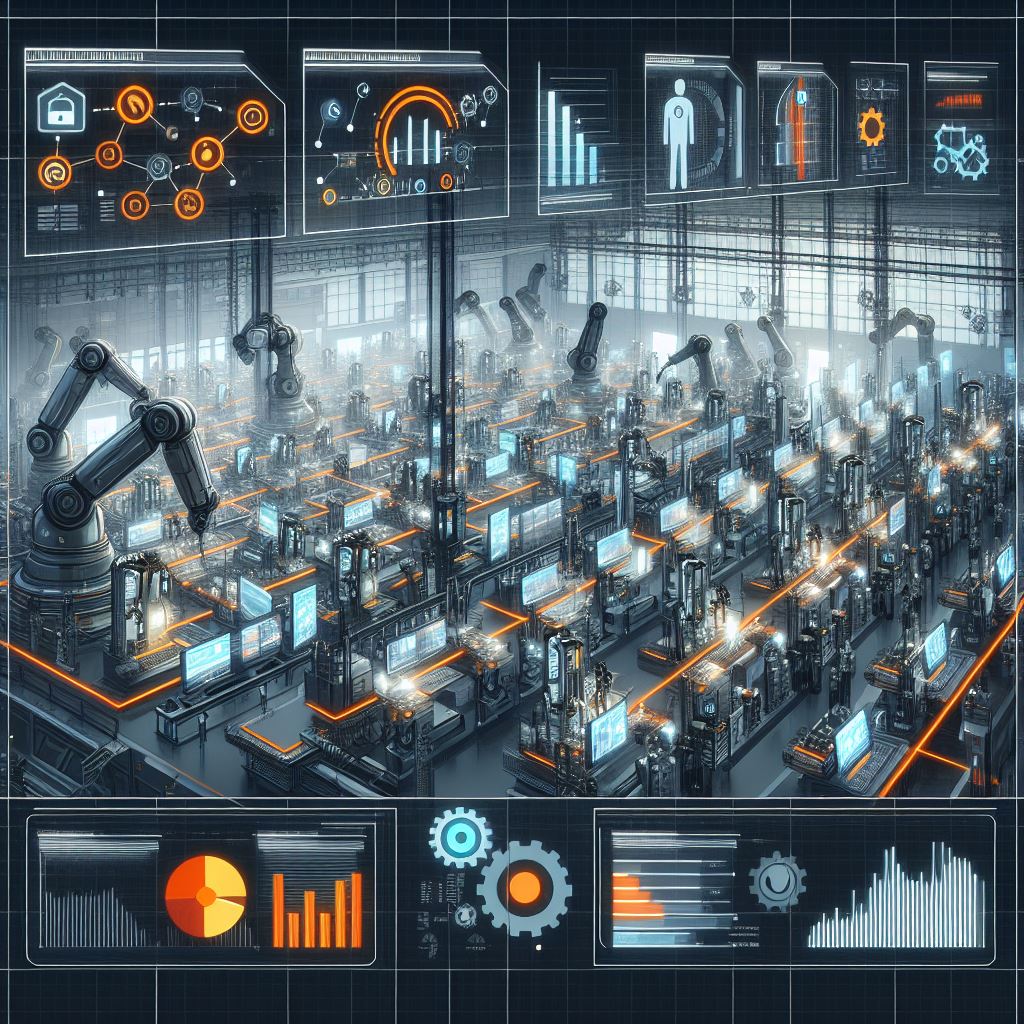The Internet of Robotic Things (IoRT) is a concept that combines robotics and the Internet of Things (IoT). It involves integrating robots and other robotic devices into the IoT ecosystem, creating a network where these devices can communicate, exchange data, and interact with humans and their surroundings.
Table of Contents
The Internet of Robotic Things (IoRT) refers to the integration of robotics and the Internet of Things (IoT) technologies. It is a concept that combines the power of robotics with the connectivity and intelligence of IoT devices. IoRT enables robots to communicate with each other and with other connected devices, allowing them to collaborate, share information, and perform tasks more efficiently.

IoRT brings together the physical world of robots and the digital world of the internet, creating a network of interconnected robotic systems. These robots are equipped with sensors, actuators, and communication capabilities, enabling them to collect data, analyze it, and make informed decisions. By leveraging the vast amount of data available through IoT devices, IoRT enables robots to adapt to changing environments, learn from their experiences, and improve their performance over time.
The applications of IoRT are diverse and span across various industries. In manufacturing, IoRT can revolutionize production processes by enabling robots to work collaboratively with humans, automating repetitive tasks, and enhancing overall productivity. In healthcare, IoRT can assist in surgeries, patient monitoring, and medication management, improving the quality of care and patient outcomes. Additionally, IoRT has the potential to transform transportation, agriculture, logistics, and many other sectors by introducing autonomous vehicles, smart farming systems, and efficient supply chain management.
What is Internet of Robotic Things(IoRT)
By connecting robots to the internet, IoRT enables them to leverage cloud computing, data analytics, and artificial intelligence. This connectivity allows robots to access vast amounts of data, collaborate with other robots, and benefit from remote management and control. It leads to improved efficiency, productivity, and functionality.
The main components of IoRT include robotic devices with sensors and communication capabilities, the IoT infrastructure for connectivity, cloud computing for data storage and processing, and data analytics and artificial intelligence for extracting insights from the collected data.
IoRT finds applications in various industries such as manufacturing, healthcare, logistics, agriculture, and smart cities. For example, in manufacturing, robots can collaborate with each other and human workers, optimizing production processes and monitoring equipment health. In healthcare, IoRT enables the use of surgical robots, telepresence robots for remote care, and exoskeletons for rehabilitation.
However, IoRT also presents challenges related to security, privacy, and ethics. Ensuring the safety and security of connected robotic devices is crucial to mitigate risks and vulnerabilities.
Overall, IoRT represents the convergence of robotics and the IoT, revolutionizing industries and enhancing our interaction with robotic technology.
Here are some key examples of IoRT applications:
Industrial automation and control: IoRT can revolutionize industrial processes by enabling robots to work seamlessly with other machines, sensors, and systems. This can lead to increased efficiency, productivity, and safety in manufacturing, logistics, and other industrial settings.
Precision agriculture: IoRT-powered drones and robotic farm equipment can collect real-time data on soil conditions, crop health, and other factors, allowing farmers to make more informed decisions about irrigation, fertilization, and pest control. This can lead to increased yields, reduced waste, and improved sustainability.
Environmental monitoring: IoRT sensors and robots can be deployed to monitor air and water quality, track wildlife populations, and detect environmental hazards. This data can be used to inform environmental policies, improve public health, and protect ecosystems.
Infrastructure monitoring and maintenance: IoRT-powered drones and robots can inspect bridges, roads, and other critical infrastructure for damage, saving time and money compared to traditional methods. They can also be used to perform maintenance tasks in hazardous or hard-to-reach areas.
Supply chain and logistics management: IoRT can optimize supply chains by tracking goods in real-time, automating warehouse operations, and streamlining delivery processes. This can lead to improved efficiency, reduced costs, and better customer service.
Healthcare and remote patient monitoring: IoRT robots can be used to assist with surgery, provide therapy, and deliver medication. They can also be used to monitor patients remotely, allowing for early detection of health problems and improved care.
Smart cities and buildings: IoRT can be used to create smart cities that are more efficient, sustainable, and livable. This can include applications such as traffic management, waste collection, energy efficiency, and public safety.
Retail and customer experience: IoRT can personalize the shopping experience for customers by providing targeted recommendations, assisting with product selection, and streamlining checkout processes.
Disaster relief and emergency response: IoRT robots can be used to search for survivors in disasters, deliver aid to affected areas, and assess damage. They can also be used to perform dangerous tasks, such as clearing debris or inspecting damaged infrastructure.
Security and surveillance: IoRT-powered drones and robots can be used to patrol buildings, monitor security cameras, and detect intruders. This can help to improve security and prevent crime.
These are just a few examples of the many potential applications of IoRT. As the technology continues to develop, we can expect to see even more innovative and transformative uses emerge in the years to come.
Discover more from TechResider Submit AI Tool
Subscribe to get the latest posts sent to your email.

